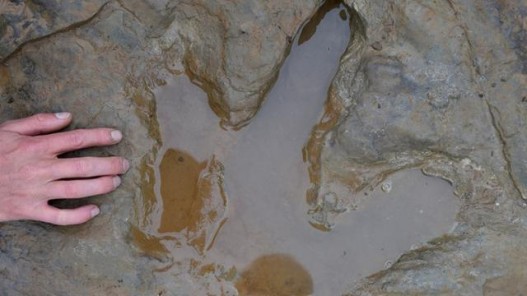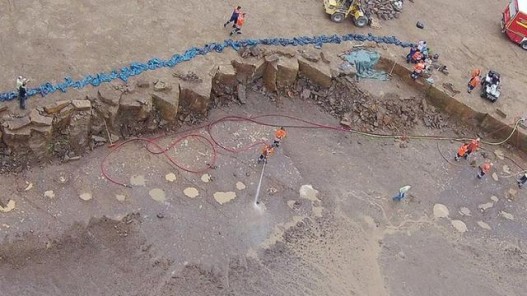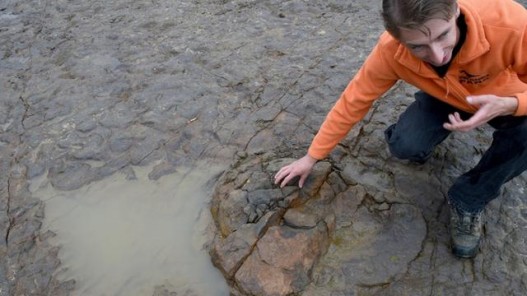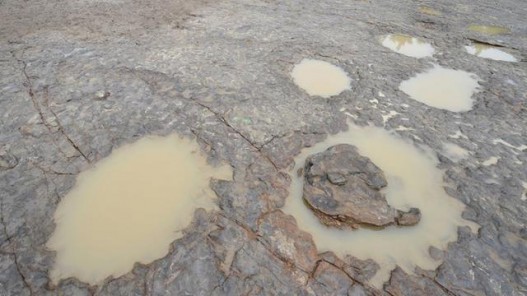Giant dinosaur footprints found in German quarry
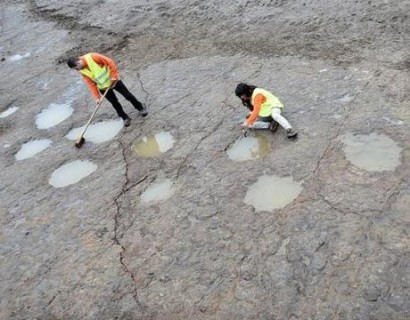 A trail of giant footprints left behind by a massive 30-ton dinosaur has been discovered in a quarry in Germany. Scientists say the footprints, which each measure four feet across and are 17 inches deep, were made by a sauropod, or long-necked dinosaur, 135 to 145 million years ago. The trail of footprints has been hailed as a major find. “There are only a few comparable sites worldwide,” Annette Richter, a paleontologist from the Lower Saxony Stat Musuem Hannover, told Bild newspaper. The new prints were found at a quarry in Rehburg-Loccum, outside Hannover. What makes the discovery so unusual is that 90 footprints have been found preserved in a continuous trail of more than 50 yards. “The special thing is that the tracks are on such a long trail – and the dinosaur has made a sharp turn, which is unusual,” Benjamin Englich, the excavation director, told DPA news agency. “The tracks are also amazingly deep, up to 43cm (17 inches) in the soil.” “The shape of the foot and the step type is typical of the long-necked dinosaurs, they left elephantine footprints behind.” A similar find of footprints measuring as much as 4.9 feet across was made in 2009 in France. “These were the last long-necked dinosaurs in this region. We have only found this one track,” said Dr Richter. But she was hopeful more prints might be found at the site. “This is a prime location in the lowest stratum, which is not degraded,” she said. The new discovery comes just days after claims an earlier find in the area may be the footprints of a mother dinosaur and its offspring. Footprints believed to have been left some 142 million years ago by smaller, carnivorous Megalosauripus dinosaurs were found nearby in Münchehagen between 2009 and 2011 Newly published research claims they were left by two dinosaurs walking side by side along what was a beach. One of the two dinosaurs was much smaller than the other, and the tracks indicate it stumbled and may have had to hurry to keep up at times, according to Pernille Venø Troelsen, a biologist from the University of Southern Denmark. “This may illustrate two social animals, perhaps a parent and a young,” Dr Troelsen said But she added there is no conclusive evidence they were left at the same time. “There may be many years apart, in which case it maybe reflects two animals crossing each other’s tracks,” she said. |
